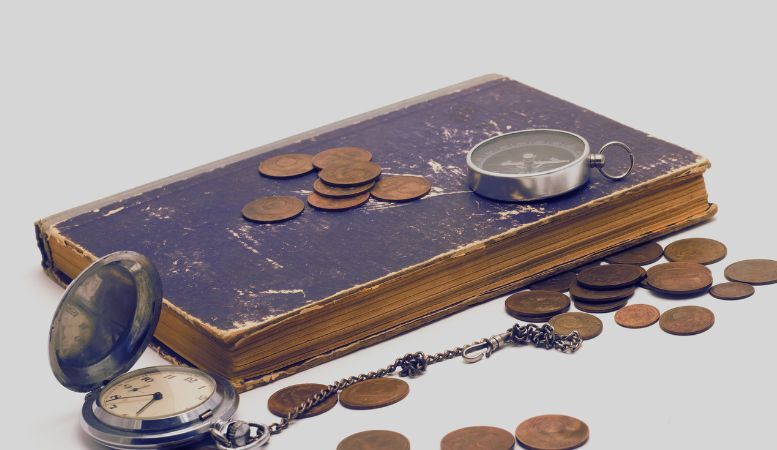Table of Contents
Proof sets and mint sets are always popular in numismatic circles. At first glance, the two types of coins appear similar. Sellers on online platforms sometimes even mistake one for the other. If you’re new to coin collecting, you may not know the difference or why it matters.
In this post, Oxford Gold Group covers everything you need to know about choosing a proof set vs. a mint set, including what they are, how they differ, and which is more valuable for collectors.
What Are the Definitions of a Proof Set and a Mint Set?
The first step in understanding proof sets vs. mint sets is defining them. Proof sets contain the finest-quality coins a mint produces. Proof coins have a sharp design and an exceptionally shiny, mirror-like finish thanks to a special production process. On the other hand, Mint sets contain regular coins that never circulated.
While proof sets contain one example of each denomination, uncirculated sets typically contain examples from different mints. Because mints produce more uncirculated coins than proof coins, mint sets are more common.
Key Differences Between Proof Sets and Mint Sets

When comparing proof sets and mint sets, you’ll notice several key differences. Let’s go through these one by one:
Coin Finish and Quality
As the name suggests, mint sets contain uncirculated coins straight from the mint. Although in perfect mint condition, they are not shinier or more sharply struck than typical new coins. This makes them less rare than proof coins.
On the other hand, proof coins are visibly different than other coins. Mints use polished dies and a double-striking action to make proof coins, which gives them clear indentations, outstanding shine, and a reflective finish. Proof coins may also receive hand-polishing during the minting process.
Packaging and Display
To protect their special finish, the US Mint houses proof coins in flat, hard plastic cases (although older sets originally came in soft plastic pouches). Mint sets, on the other hand, come in folders. Blue folders designate coins from the Philadelphia Mint, while red folders designate coins from the Denver Mint.
Intended Purpose and Collector Appeal
Mints originally created proof coins to test their printing process before producing thousands of coins for circulation. Now, however, they make them solely for collecting. Because of their rarity and beauty, proof coin sets are very attractive to collectors.
The uncirculated coins in mint sets are more common than proof coins. But since they are less common and in better condition than circulated coins, they also appeal to collectors.
Do Proof Sets or Mint Sets Often Feature Coins With Historical Significance?

Many collectors believe all proof and mint sets have historical significance because they serve as a record of each year’s coins. However, some mint and proof sets contain special-issue or otherwise significant coins.
For example, the US Mint prints limited-edition proof coins commemorating American people, events, places, and institutions. While these coins are legal currency, they are not designed to enter general circulation and usually end up in the hands of investors.
Mint sets also sometimes contain coins you would otherwise not encounter in circulation, including low-mintage 1973 Eisenhower dollars, 1970-D Kennedy half dollars, 1987 Kennedy half dollars, and 1996-W Roosevelt dimes.
From 1965 to 1967, a coin shortage forced all US mints to make coins with no mint marks. During these years, the mints produced neither proof sets nor uncirculated mint sets. Instead, they sold “special mint sets” containing circulation coins with a satin finish to collectors.
Although these sets were neither proof sets nor true uncirculated sets, they are still popular with collectors looking to complete their annual set collections.
Which Set Is More Valuable for Collectors?
As you evaluate the pros and cons of proof sets and mint sets, you’re probably wondering which is worth more. Generally, proof coins are worth more than uncirculated coins because of their unique finish and comparative rarity.
However, the value of proof sets and mint sets also depends on their production year and variety. You can buy some sets for less than $5, while earlier sets may fetch thousands of dollars.
Tips for Choosing Between the Two Sets

When choosing between proof and mint sets, the following practices can help you decide what is right for you.
Researching and Authenticating Sets
Doing your due diligence can help you learn more about the sets that interest you. If you’re collecting coins for fun, you can look into sets with historical significance, unique coins, or those that fill in gaps in your collection. If you’re collecting to make money, you’ll need to look more carefully at which sets have increased in value.
While proof sets and mint sets aren’t the most profitable sectors in the coin-collecting market, some earlier sets may fetch you some cash. For example, a 1947 Mint Set is now worth over $2,000, while a 1936 Proof Set could sell for nearly $7,000.
When buying or selling proof and mint sets, it’s best to trade them as completely as possible, including the original packaging, boxes, documents, and Certificates of Authenticity (for modern sets).
Understanding Grading Systems
Grading systems use a standardized scale to assess the condition of coins. Using the internationally accepted Sheldon Coin Grading Scale, coin graders evaluate a coin — looking at things like shine, attractiveness, tone, and defects — and assign it a numerical value from 1 to 70.
Coins with a grade of 1 are in poor condition, and coins with a score of 60 to 70 are in mint condition. Grading categories in between include “good,” “fine,” and “almost uncirculated.”
In general, higher-rated coins fetch higher prices. When purchasing a mint set, avoid those containing coins with dents, scratches, unsightly toning, or other obvious blemishes.
Storing and Preserving Sets
Many collectors have learned the hard way that packaging and storing coins improperly can lead to permanent damage and a loss of value. In fact, US Mints used to assemble mint sets using cardboard panels to hold the coins. The holders contained sulfur and glue and did not protect the coins from oxidization. This led to many coins becoming toned and spotty.
From a collector’s perspective, however, this goes both ways. Some collectors desire coins with these features, while others seek out older proof sets in their original cardboard holders. If this doesn’t appeal to you and you purchase a mint set dated 1936-1955, be sure to inspect the coins before purchasing.
The US Mint recommends storing modern coin sets in their original containers. If you must remove them, choose cardboard free from acid or plastic holders free from polyvinyl chloride (PVC).
Where Can You Purchase Proof and Mint Sets?
You can buy proof and uncirculated coin sets directly from the US Mint. You can also find them through coin dealers, retail collectible stores, and reputable online sellers.
Add Coins to Your Investment Portfolio With Oxford Gold Group
We hope this article has helped you understand proof sets vs. mint sets. If you want to learn more about investing in coins, contact Oxford Gold Group. We incorporate gold, silver, platinum, and palladium coins (and bars!) in our precious metal investment products, including our precious metals IRA.








